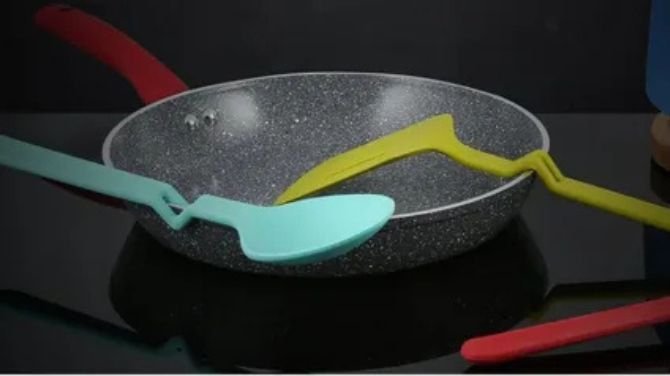science-technology

May 09,2025 • 3 min read
Silicone Cookware: Is It Safe for Everyday Cooking?

Introduction
Silicone cookware has gained popularity in recent years due to its non-stick properties, heat resistance, and vibrant colors. But many people wonder: Is silicone cookware truly safe for everyday cooking? In this article, we will explore the safety, benefits, and potential drawbacks of using silicone cookware in your kitchen.
What is Silicone Cookware?
Silicone cookware is made from a synthetic rubber-like material that is flexible, durable, and resistant to heat. Unlike traditional metal or plastic cookware, silicone does not react with food or produce harmful fumes. Its ability to withstand temperatures ranging from -40°F to 500°F makes it suitable for baking, cooking, and even freezing.
Is Silicone Cookware Safe for Cooking?
One of the primary concerns about silicone cookware is whether it releases harmful chemicals when heated. According to the FDA, food-grade silicone is generally safe and does not leach chemicals into food. However, it is essential to choose high-quality, BPA-free silicone products to ensure safety.
Benefits of Using Silicone Cookware
Silicone cookware offers numerous advantages that make it a favorite among home cooks and professional chefs alike. Here are some key benefits:
-
Non-stick surface: Reduces the need for added oils and fats.
-
Heat resistance: Safe to use at high temperatures without melting or warping.
-
Flexibility: Easily bends for convenient storage and effortless food release.
-
Durability: Resistant to cracking, peeling, and fading.
-
Easy to clean: Dishwasher-safe and resistant to stains and odors.
Potential Drawbacks of Silicone Cookware
Despite its benefits, silicone cookware does have some potential downsides:
-
Quality variations: Low-quality silicone may contain fillers that can affect safety and performance.
-
Odor retention: Some silicone items may retain strong food odors after cooking.
-
Limited browning: Compared to metal cookware, silicone may not brown foods as well.
How to Choose Safe Silicone Cookware
When purchasing silicone cookware, keep these tips in mind to ensure you are getting a safe and reliable product:
-
Check for certifications: Look for FDA-approved, BPA-free labels.
-
Opt for reputable brands: Established brands often offer higher-quality products.
-
Perform a pinch test: Pinching pure silicone should not reveal any white streaks, which indicate fillers.
Conclusion
Silicone cookware is a versatile and convenient addition to any kitchen. While it is generally considered safe, it is essential to choose high-quality products and use them properly to avoid potential risks. Whether you are baking a cake or preparing a hot dish, silicone cookware can make cooking more enjoyable and hassle-free.
By understanding the benefits and drawbacks, you can make an informed decision about incorporating silicone cookware into your daily routine.
Dani Afzal Details
User Profile
- Full name
- Dani Afzal
- Email address
- danishura12@gmail.com
- Join Date
- 2025-05-09
- State
- City
- Pincode
- Address
- Follow us on Facebook
- Follow us on Twitter
- Website Name
- Bio